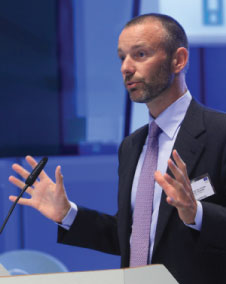
By Olivier Jankovec, Director General, ACI EUROPE
At many airports across Europe, the peak summer months have not lived up to expectations. Subdued passenger traffic and continued negatives for freight traffic reflect the bite of fiscal austerity as well as weakened consumer and business confidence. The winter season ahead of us looks set to be difficult, with renewed fears of capacity cuts by airlines. For many of them, oil price levels and weak demand mean that flying less is likely to make economic sense. This means both increasing seasonality and decreasing revenues for airports – with the challenge of service quality requiring that most of our facilities (and the underlying costs) be scaled for the peaks.
However, beyond the winter, prospects for the coming years are still for significant growth in air traffic – albeit at a slower pace than in the past due to weakened European economies and further market maturity. More fundamentally, while traffic growth used to be a given for (almost) all airports, this will not necessarily be the case. More selective growth is likely to be the norm. Growth 2.0 if you will.
In order to secure a slice of that growth, further business transformation will be needed. In fact, as I outlined at our Annual Congress in Madrid last June, European airports have tangibly moved from being mere infrastructure providers to establish themselves as fully fledged businesses, but they now need to go one step further – from business transformation to business evolution. Airports are predominantly fixed-cost businesses relying on growth. A key success factor in the era of Growth 2.0 will be the flexibility to adapt. Jost Lammers, CEO of Budapest airport, has learned the hard way – as you can read in our lead interview in this issue. The demise of their hub airline has left no alternative but to re-define the airport’s business model. The speed at which this has been done and the impressive recovery so far, speak of an agile and dynamic organisation, a competitive business that is used to fending for itself.
Growth 2.0 invariably means that there will be winners and losers, but that’s part and parcel of the increasing competitive pressures on airports today. Airport competition is a reality in Europe and ACI EUROPE has been working tirelessly to get that message across. The independent study by Dr Harry Bush and Copenhagen Economics which we released before the summer provides ample evidence of this. Long gone are the times when the norm was for airports to be the dominant party in the airline-airport relationship. Yet, regulations at both EU and national level are still based on this largely unsubstantiated and old-fashioned assumption.
But more often than not, it is not just regulation, but also airlines’ behaviour that can be puzzling in its anti-competitive nature. Witness the efforts that a major European network airline recently deployed to prevent Amsterdam-Schiphol airport from welcoming the A380 operated by one of its competitors, as well as from offering dedicated lounges facilities. That same airline has quite an interesting take on the future development of its hub airport – in short, Schiphol should only invest in the capacity that it needs, not in the capacity that other airlines need. One can only hope that the national regulator will take a fair and enlightened view on these issues.
As usual, this issue of Airport Business also brings you up to speed with the latest developments on the stories that matter. The new roadmap for a gradual removal of existing restrictions on liquids, aerosols and gels is a positive development that owes much to our actions and the pragmatic approach of the European Commission. On the environmental front, after just 3 years, Airport Carbon Accreditation has firmly established itself as the carbon management standard for our industry. We also look at operational developments on the ground at several airports in Europe and highlight some of the ways that airports are adapting, improving and developing that flexibility which will be critical in the years to come.







